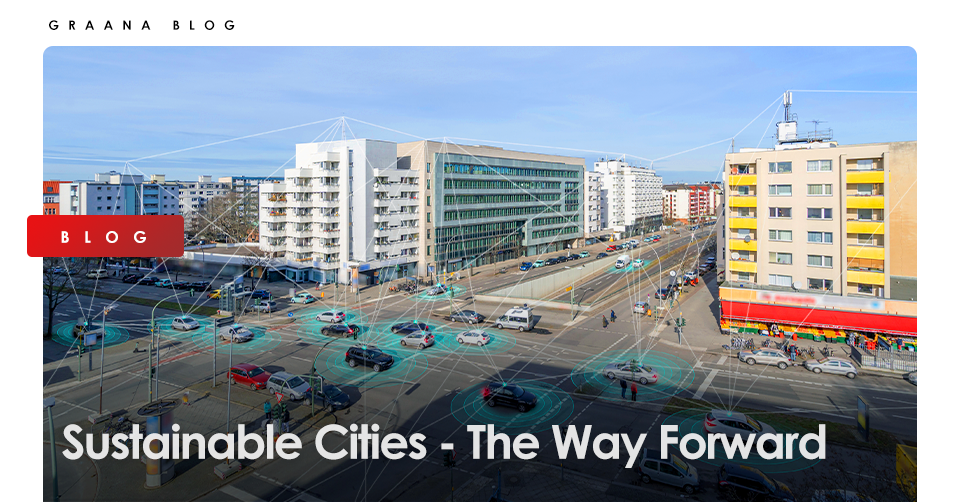
At the start of the century, only 10 cities had more than 1 million people. Presently, the world has 450 such cities. If the current population explosion trend continues, the world population will reach 8 billion to 10.5 billion in 2050. As per the United Nations Report, 70% of these people will be living in urban areas. Moreover, 80% of the expected urban growth will take place in the developing regions of Asian and African countries. Consequently, the urban expansion will start establishing their settlements in the peri-urban and suburban areas, which will result in yet another problem – a gradual de-densification of urban settlements, which is currently around 2% per annum. In Pakistan, the city of Islamabad witnessed a substantial drop of 15% in its urban population in the 2017 census, while facing a 6.95% increase in the rural areas (which are essentially the peri-urban areas, along the Islamabad Expressway)
With such an accelerated urban expansion, the existing infrastructure will require up-gradation to sustain rapid growth. Therefore, Graana.com highlights how the concept of sustainable cities will have to be implemented to deal with this impediment.
With increased urbanisation, there is an increased release of harmful emissions and greenhouse gases. To allow for sustainable living, these emissions need to be reduced and one way to do that is through mainstreaming vertical gardens. Vertical gardens entail the plantation of gardens on vertical panels through hydroponics. The plantation of the green spaces will act as a natural purifier that will help curb the number of toxic chemicals such as formaldehyde and carbon monoxide that usually occurs in office spaces.
Moreover, the emissions can be reduced through excessive use of renewable energies, eco-friendly transport (primarily electric vehicles), efficient waste management system, forestation, and careful use of energy at domestic levels.
In Shenzhen, China, more than 6,000 units of climate-friendly vehicles were produced and introduced to the market in 2013 that had zero carbon radiation.
Rainwater harvesting is another feature of sustainable homes. Water is a basic necessity and vital for survival. It is required to undertake basic everyday tasks such as showering, cooking and cleaning. Water is also required to grow and cook food. Therefore, to meet the growing need for sustenance, urban farming appears to be an important factor of sustainable cities. It may include rooftop farming, vertical gardens, teaching kids to grow food in schools, allotments, and encouraging farmers markets. These can be undertaken with the help of rainwater harvesting that will increase the supply of water for urban farming.
Water is a scarce resource. And in many countries around the world, there is a serious shortage of water. With the excessive use of water, even the groundwater resources have depleted. There are multiple reasons why this keeps happening. Firstly, the government fails to provide a resource to all citizens adequately; secondly, private companies operate a network that sells this resource without being authorised by a competent authority; lastly, no new sources are being explored to maximise the capacity. Therefore, “Reverse Osmosis” for drinking water is the way forward. Reverse osmosis uses pressure to remove unwanted particles and dissolved chemical substances along with biological ones (essentially bacteria) from water.
Resources cannot meet the rapidly increasing requirements unless utilised intelligently and recycled wherever possible. Sustainable cities have vigorous systems to produce minimum waste and with a robust recycling mechanism. They have the capability to recycle more than 80 per cent of the waste by adopting interesting and viable strategies. In San Francisco, more than 80% of the trash is recycled and only 20% goes to landfills. Similarly, waste can be minimised if there are proper sewage treatment mechanisms in place to use it for multiple purposes. One such use can be to use the treated sewage for horticulture and then discard it to nearby water sources in a bid to support aquatic flora and fauna.
Tech-based real estate development has really delivered across the world. With increased connectivity, energy-efficiency, and relatively less use of time and resources, these buildings have become an all-time hit now, and for sustainable cities, they are considered the linchpins. One feature of these smart cities is the stable supply of power that is available throughout the day without any disruptions.
One of the ways that can be achieved is through the use of sustainable sources of energy such as solar energy. Sun is abundant in many parts of the world including Africa and Asia and can be utilised to cut down on power cuts. These are also the regions where there are electricity shortages. Therefore, partial use of solar energy along with conventional methods will provide a viable alternative to ensure a steady electricity supply.
Sustainable cities are the future of the world. Particularly, in Pakistan where urbanisation has risen to be a menace for our urban planners, adhering to sustainability has become inevitable. It’s not necessary that every above-mentioned feature is immediately reflected in our cities, but yes, serious consideration could be given gradually.
DUBAI: Pakistani real estate developers and representatives showcased a range of commercial and residential investment…
ISLAMABAD: Capital Development Authority (CDA) is currently undertaking a major Rs652 million project to upgrade…
Karachi – Mayor Barrister Murtaza Wahab has announced the launch of a citywide anti-encroachment operation…
ISLAMABAD: CDA Chairman Muhammad Ali Randhawa has directed the immediate restoration of 23 non-functional water…
ISLAMABAD: In a major relief for the real estate sector, the federal government has decided…
DHA Islamabad-Rawalpindi (DHAI-R), one of the most trusted names in Pakistan’s real estate landscape, is…